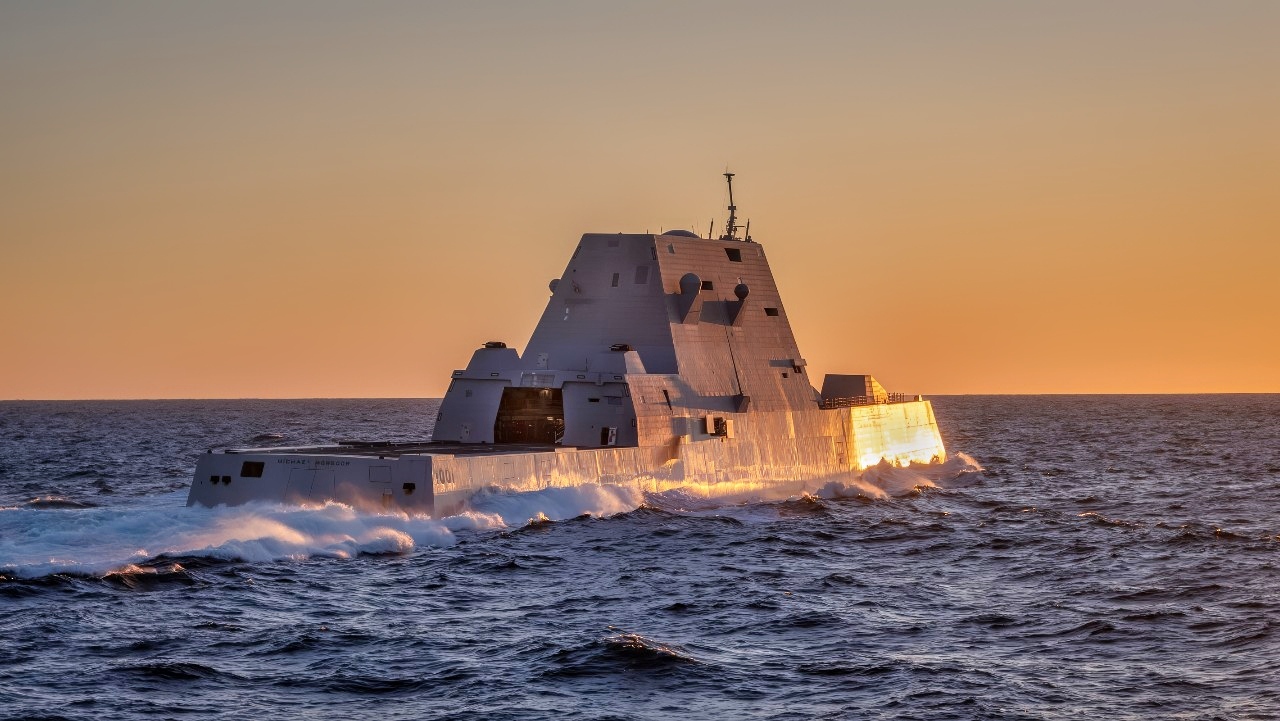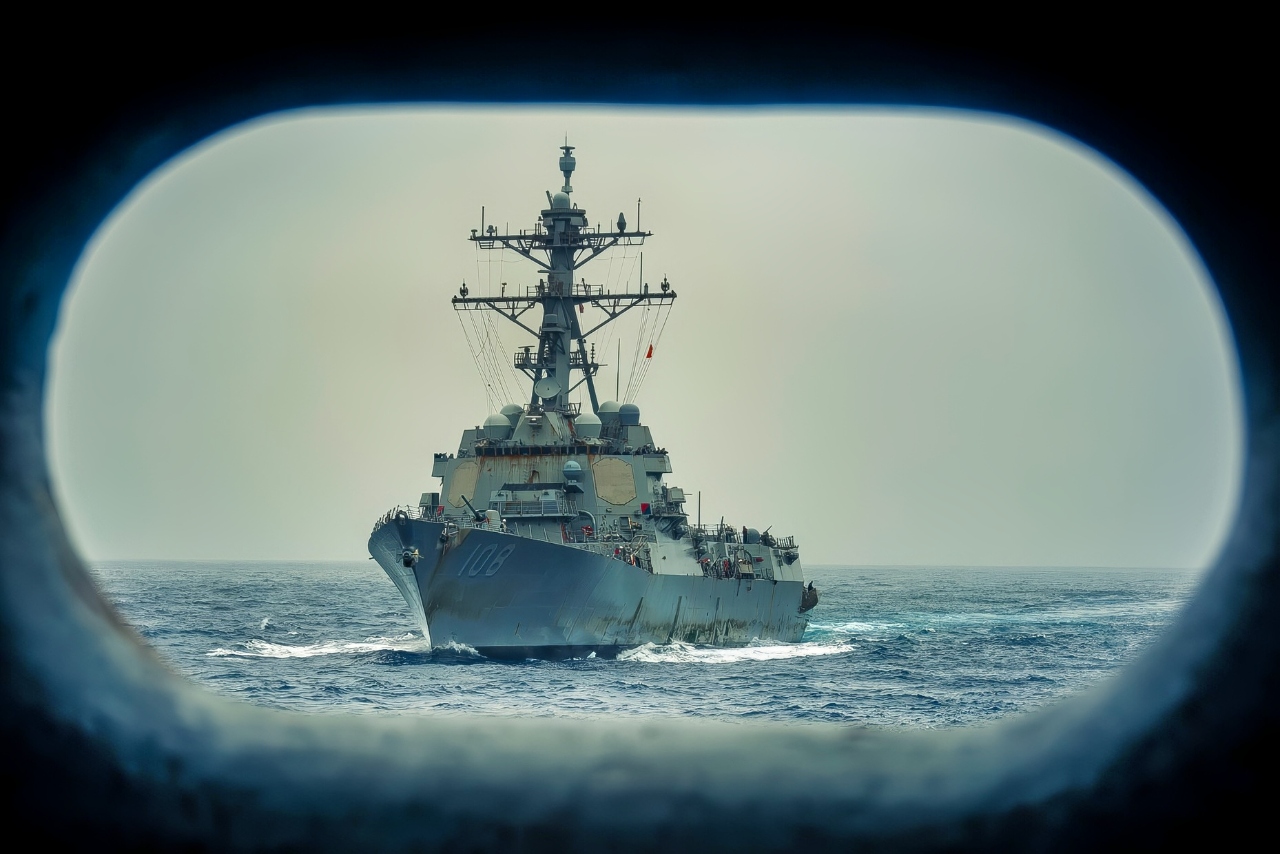Key Points and Summary – The U.S. Navy has pulled the plug on the Constellation-class frigate after only two ships, cancelling four hulls and effectively killing what was supposed to be its “low-risk” post-LCS, post-Zumwalt recovery program.
-Adapting the Italian FREMM design to U.S. systems drove up size, weight, and cost while cutting speed below 25 knots.

(February 10, 2024) — The Zumwalt Class Guided Missile Destroyer USS Michael Monsoor (DDG 1001) breaks away from the Henry J. Kaiser-class fleet replenishment oiler USNS Pecos (T-AO 197) shortly before sunset after taking on fuel. (U.S. Navy photo by Chief Mass Communication Specialist Mark D. Faram)
-An overstretched Marinette yard, incomplete designs at start of construction, and schedule slips pushed the price more than 50 percent higher and delivery years to the right.
-The result: another pair of “unicorn” ships and fresh proof that the Navy’s major surface combatant acquisition machinery is badly broken.
From “Slam Dunk” to Scrap: What Went Wrong With the Constellation-Class Frigate
Somehow, the Constellation-class frigate program went bad.
Yesterday, the US Navy announced that procurement of the Constellation-class frigates, expected to be a mainstay of the fleet for decades to come, is being suspended at two ships.
Four ships were immediately cancelled, and there appears to be no expectation of resuming further construction.
What happened?
It turns out that redesigning a foreign hull to meet USN operational and technical requirements was too difficult a task for the Navy’s bureaucratic architecture to handle.
Additional problems involving shipyard and workforce capacity drove up costs and pushed back delivery dates.
And now the program has failed and died, just like the Littoral Combat Ship and the Zumwalt class destroyer.

Littoral Combat Ship. Image Credit: Creative Commons.
After years of procurement catastrophe, the Navy needed a softball. When it got one, it whiffed anyway.
It Wasn’t Supposed to Be This Way
As a program, the Constellation frigate was designed to be a slam dunk for a naval procurement process that had gone badly off the rails.
After the failure of the Littoral Combat Ship (done in by technical problems and changing design requirements), the Zumwalt class destroyer (done in by changing design requirements and extraordinarily high costs), and the difficulties with the Ford class aircraft carrier (cost overruns and technical problems), the Navy badly needed a win.
In an effort to ensure that the Constellation class did not fail, the USN selected a design based on the European FREMM frigates, hoping that the platform’s maturity, its relatively low cost, and its evident success in international service would help sidestep any problems.
Of course, the original project required adjustments, and the Constellations will displace about 7,200 tons, larger than most foreign destroyers but smaller than the Arleigh Burkes.
The Project went Sour
But the design was not complete when construction began, a process that invariably produces problems and delays. Adaptation of the FREMM design for USN service increased its size and weight due to changes required to accommodate US systems.
Weight growth reduced the speed to below 25 knots, making it difficult for the ships to operate comfortably in carrier battle groups and limiting the prospects for future modification. Worst of all, the Marinette shipyard faced severe workforce maintenance issues.
These problems pushed up the ship’s price by more than 50% and pushed back its projected completion date by about 3 years.
Hopes that the Constellations could help fill the short-term gap created by the retirement of the Ticonderoga class cruisers were dashed.
What’s Next?
Problems with construction weren’t the only issues with the Constellations. Some worried that the warships would not significantly contribute to a high-intensity conflict in the Western Pacific because they themselves were not particularly survivable in such an environment.
The Navy seems to have believed that they cost too much for the amount of capability they provided, and that smaller (possibly unmanned) vessels would better fill out the fleet.
Regarding surface warships, the Navy will continue to rely on the reliable DDG-51 hull for the foreseeable future. This may eventually be supplemented by the next DDG(X) large surface combatant project, but there’s no telling if that program will actually result in any useful ships.

(August 1, 2025) The Arleigh Burke-class guided-missile destroyer USS Wayne E. Meyer (DDG 108) approaches the Nimitz-class aircraft carrier USS Nimitz (CVN 68) for a replenishment-at-sea in the U.S. Central Command area of responsibility. (Official U.S. Navy photo)
What Happens Now?
At this point, there should be absolutely zero confidence that the US Navy can handle a major surface warship acquisition project.
Something has gone badly wrong with the process, leaving the USN without a successful follow-up to the DDG-51, a project that began in the 1980s.
This also leaves the Navy with another pair of “unicorns,” ships that will struggle to fit into traditional formations because of their small numbers and unusual requirements.
At a time when the US Navy is facing its most serious sustained challenge since the emergence of the interwar Imperial Japanese Navy, its procurement machinery seems utterly, hopelessly broken.
About the Author: Dr. Robert Farley, University of Kentucky
Dr. Robert Farley has taught security and diplomacy courses at the Patterson School since 2005. He received his BS from the University of Oregon in 1997, and his Ph.D. from the University of Washington in 2004. Dr. Farley is the author of Grounded: The Case for Abolishing the United States Air Force (University Press of Kentucky, 2014), the Battleship Book (Wildside, 2016), Patents for Power: Intellectual Property Law and the Diffusion of Military Technology (University of Chicago, 2020), and most recently Waging War with Gold: National Security and the Finance Domain Across the Ages (Lynne Rienner, 2023). He has contributed extensively to a number of journals and magazines, including the National Interest, the Diplomat: APAC, World Politics Review, and the American Prospect. Dr. Farley is also a founder and senior editor of Lawyers, Guns and Money.
More Military
Montana-Class vs. Yamato-Class: It Would Have Been the Ultimate Battleship Battle
The Littoral Combat Ship Might Be the Navy’s Biggest Mistake Ever










